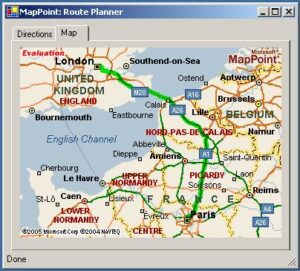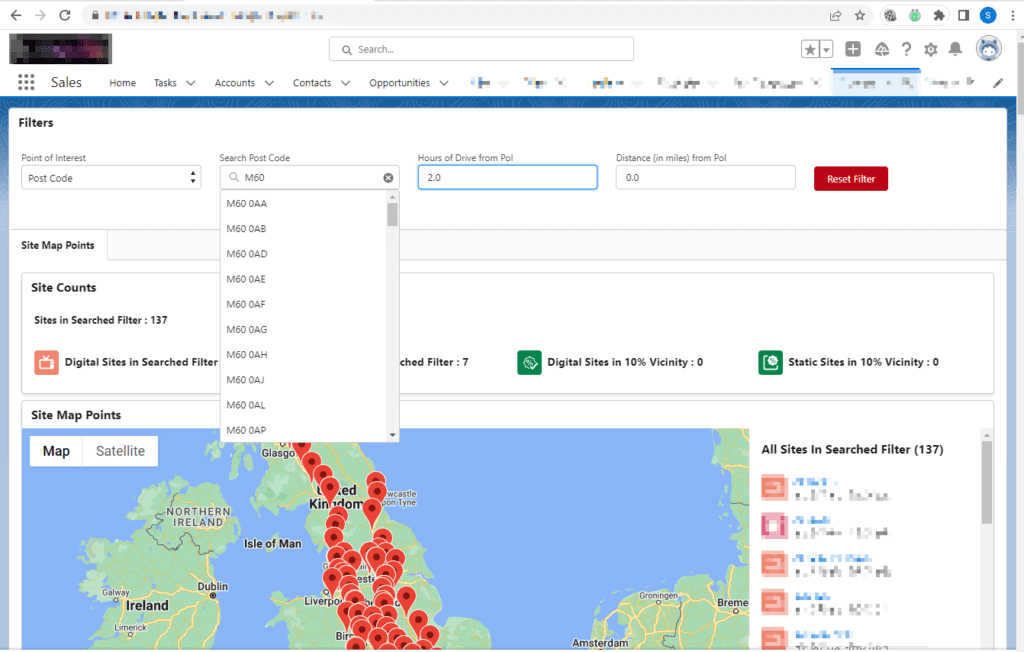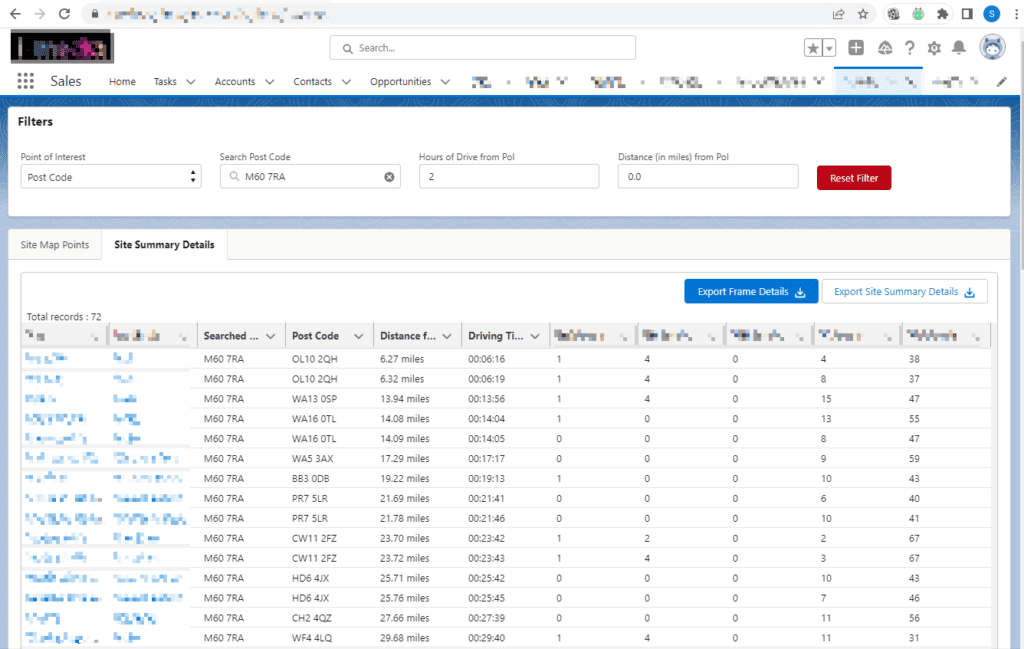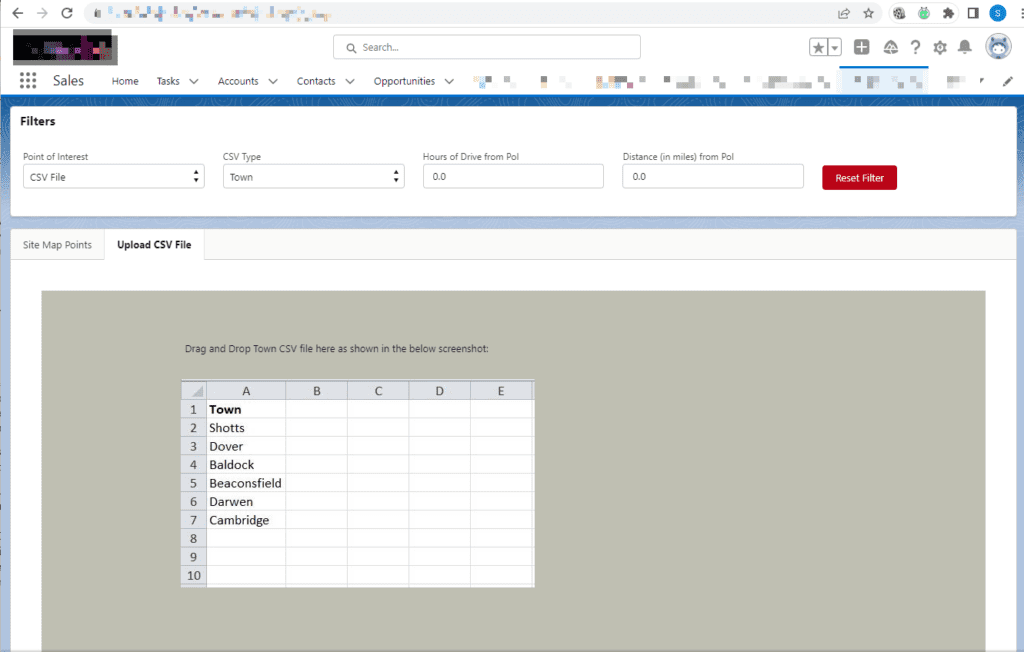Mapping 1.8m postcodes in Salesforce: decreased admin time and increased sales
- Client had assets in locations across the United Kingdom but no simple way to visualise them
- The sales team used an outdated, on-premise system to build their map pin-dropping
- Too much time and effort wasted on simple mapping tasks leading to less time spent selling
- Divided the transformation into two phases: use Salesforce Native mapping as phase 2 and Google maps API in phase 2
- Tapped into ONS API connections of postcode and geo location data – over 1.8 million records ingested
- Search, CSV upload and point-and-click functionalities built to get mapped outputs
- Up to 75% time spent on building maps for proposal saved for the sales team
- Enhanced functionalities provided more purchase options for brands including all sites within a specified radius or within a certain drive time
- Ability to provide more options to the end-customers meaning increase in trust with sales team
One of our clients owns multiple advertising assets across 137 locations in the United Kingdom. The sales team works on maximising the occupancy of brands in these advertising assets. This means they need to be talking as much as they can to multiple stakeholders: local and national, to effect more sales of ad spaces on these assets.
Typically, in order to make best use of the ad space, the brands ask to advertise based on a rule: usually within x miles or within x hours drive from their outlet.
To provide options to the brand, our client used an outdated on-premise software that had the UK postcodes pre-loaded and offered limited functionalities of search. The tool only allowed for restricted number of queries to be run at a certain time and had limited export functionalities. Also, it was standalone with no integration to the list of assets our client owned. All these factors meant that multiple sources of the same data had to be maintained and a lot of manhours had to be wasted executing a simple task such as ‘give me the number of ad spaces we own within 5 miles radius of M60 7RA that has male washroom assets and D48 assets’.
Something had to be done.
Image 1: The on-premise legacy tool used (illustrative)
We began by understanding the use cases and the goals the sales team users wanted to achieve. The primary goal was to put the mapping functionality to increase sales revenue. Subsequent goals included ease-of-use, quick turnaround and unified data access. The sales team needed the functionality to search by postcode, town, county, region, country and by uploading a CSV file of all of the above. We gathered that, the use cases and goals, if implemented, will help the sales team provide better value to the brands they served.
After consultation, we scoped the project to run in two phases: the immediate priorities will be covered in phase one, in which we proposed to use Salesforce’s native mapping functionality and in phase two, we suggested we will have API integrations with Google Maps. Though this approach involved losing some existing use cases (e.g. ability to get a route from location A to location B), the benefits of moving to a Salesforce solution outweighed the setbacks.
We proceeded with implementing the solution and used ONS postcode data API to ingest more than 1.8 million UK postcodes into client’s Salesforce org. We optimised the data usage by creating custom objects that reduced the querying time when the tool is used. We also built a custom Aura component with sophisticated search functionalities that allowed the user to search by different variables and search by uploading CSV files. At client’s request, we implemented CSV export functionality that provided information about the locations the search returned and the types of assets available in those locations.
Image 2: Landing page with search functionality
Image 3: Search results tabulated and exportable
Image 4: CSV upload functionality
The rolled out phase one immediately enhanced the sales team’s ability to self-service with up to 75% of time saved compared to the legacy solution. Now, the sales team could use the mapping tool to understand and present various options available to the brands they were selling to. This increased the trust the brands had with the sales team and led to better close rates.
In a matter of days, the sales team fully adopted the Salesforce, single-source-of-truth solution we built and have made it part of their sales toolkit. Currently, it’s being used every day to add better value to the brands they serve.
